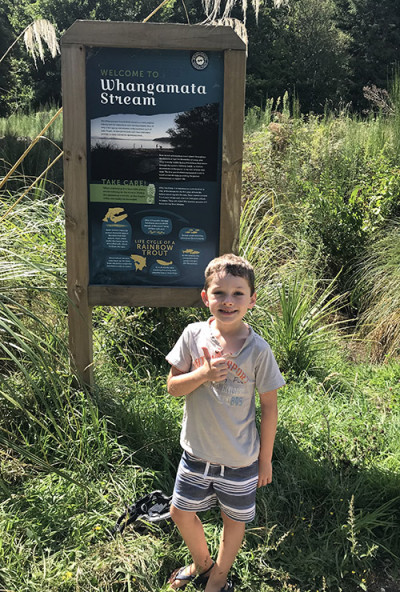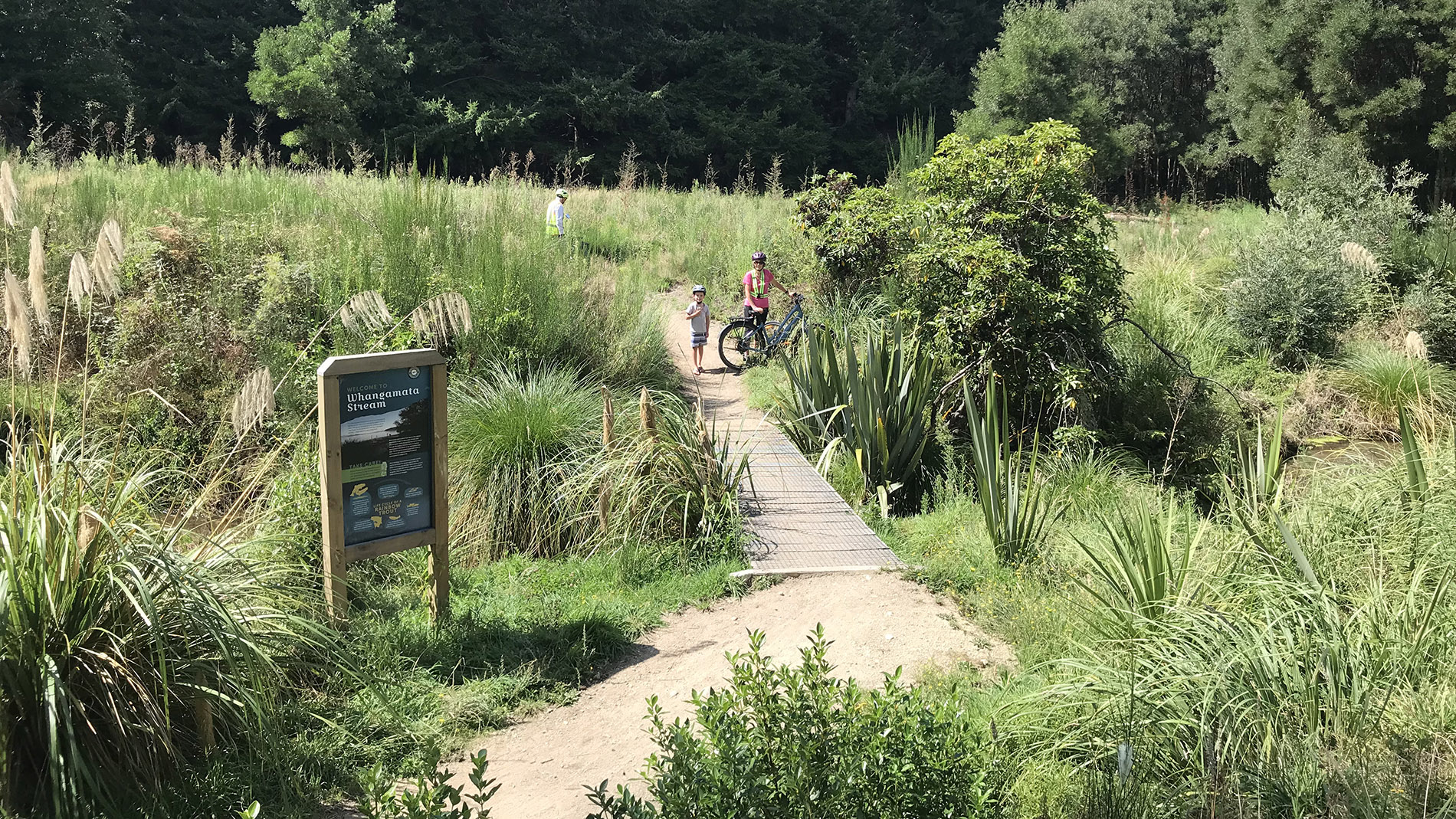“We have planted around 500 mānuka over the last few years and thousands of other plants.”
- John Crowley, Whangamata Stream Trail chair
In the small village of Kinloch, just off State Highway 1 heading towards Taupō, is a beautiful walkway along the Whangamata Stream sided by regenerating native bush that stretches in places up to 100 metres wide in either direction.
It’s project that started in the 1970s and is testament to what a dedicated group of volunteers can achieve with a little bit of funding help.
 Whangamata Stream Trail Committee chair John Crowley says looking at the walkway today, you would have no clue that blackberry, broom and Japanese honeysuckle once strangled the walkway sides and stream bank.
Whangamata Stream Trail Committee chair John Crowley says looking at the walkway today, you would have no clue that blackberry, broom and Japanese honeysuckle once strangled the walkway sides and stream bank.
Over the years, a team of up to 40 volunteers connected to the Whangamata Stream Trail Committee, cleared the weeds and slowly replaced them with thousands of native plants, including flaxes, mānuka, kōwhai and beech trees. They have also progressively improved the 4-kilometre trail so it is now suitable for biking and walking.
The work has been carried out with the help of funding and advice from Waikato Regional Council. Most recently, they received three years of funding worth $20,261 from Waikato Regional Council’s, Environmental Initiatives Fund (EIF).
The regional council’s EIF is open for applications by community groups keen to embark on restoration projects that enhance or benefit the environment or provide environmental education. Applications open in July each year and projects can apply for up to $40,000 each funding round.
John says they have used some of those funds for more clearing in areas along the stream that still needed work, and planting beech trees at the northern end of the trail. The balance is being used for more riparian planting in the same area.
“We have planted around 500 mānuka over the last few years and thousands of other plants.”
The committee puts the call out for helpers to working bees on the local Facebook page and plenty always turn up, says John.
“We had about 22 volunteers here with weed eaters just the other weekend helping to clear areas ready for planting. We like to clear them and then get the plants in as soon as possible because once the plants are in, they help to close out the weeds regrowing.”
The project started when a local farmer vested the land on either side of the stream into Department of Conservation (DOC) ownership. The Kinloch Community Association then took over managing it and eventually the Whangatamata Stream Trail Committee was formed to do the labour.
The stream itself is an important trout spawning area and if you visit during spawning season you will see trout milling about in the clear water.
“It’s a wonderful environment and it’s used so much by the local community and holidaymakers to the area,” says John, who has lived near Kinloch for 30 years.
He says the regional council has also helped with advice on what to plant where: flaxes planted closer to the stream edges, natives to fill the riparian area and larger trees like beech on the perimeter.
“It’s been a real learning process for all of us and the knowledge shared by council staff has been really helpful.”
The most recent goal is to get the trail to wheelchair and stroller access standard.
The group also have a strong pest control focus and want the trail to become a bird corridor from the hills behind the trail down to the lake.
“We already have a lot of tūi and bellbirds, but we’d like to attract wood pigeons and kākā. We’ve been carefully choosing trees that will be a food source for the birds and a nesting opportunity for them as well.”



